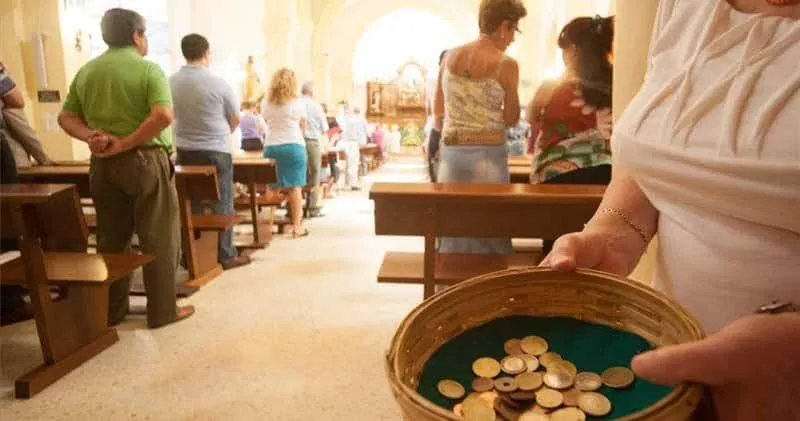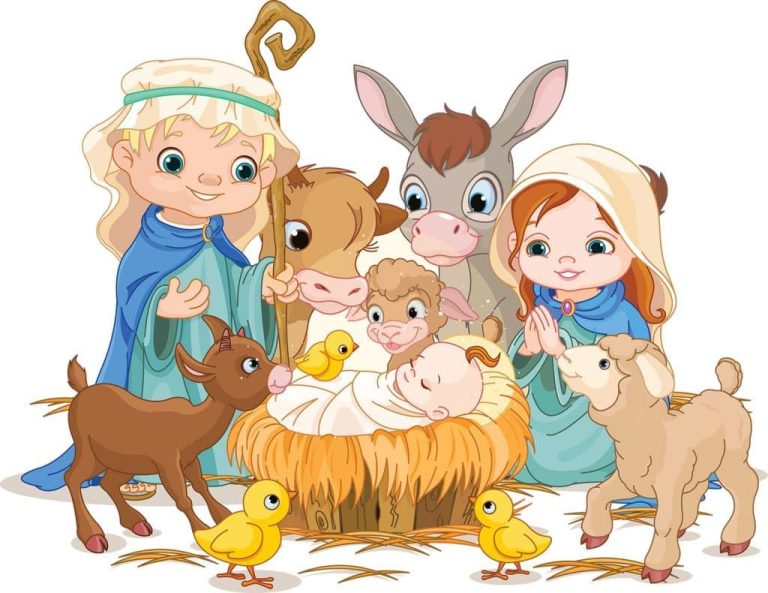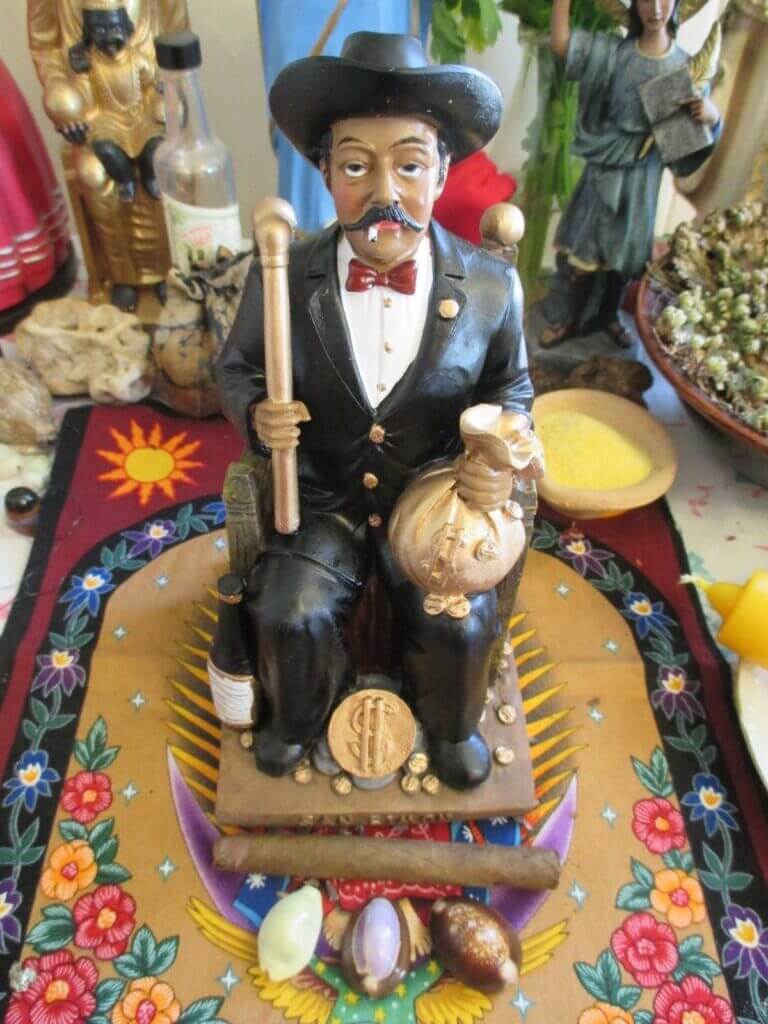The Parts into which the Holy Mass is Divided
In today’s article we will teach you the Parts of the Catholic mass. Discovering the meaning of each of them and the order in which they should be performed. You will learn a little about the liturgy of the word, the Eucharist, the songs, the final feast and all the others. In addition, we will briefly indicate how the tradition of the mass arises and what its function is.
Parts of the Catholic Mass
Although the mass is a celebration that is done to commemorate the last supper of Jesus, his teachings and the sacrament of the Eucharist. It does not mean that this is done in a haphazard, disorderly and unstructured way. In fact; Over the years this ritual has been established to such an extent that the father’s way of proceeding and all the elements that must be incorporated during the celebration have been standardized. Today the mass is divided into four distinct moments:
- The initial rites.
- The liturgy of the word.
- The Eucharistic liturgy.
- The closing rite.
In turn, each of these moments can be divided into other sub parts. Below we explain in detail how each of them is structured.
Initial Rites
As the name suggests, this section consists of the rites and songs that are performed at the beginning of the celebration of the mass. During this moment the parishioners (name given to the people who participate in this celebration) prepare to listen to the homily or preach, and then allow the father or priest to enter. This moment of the mass is divided in turn into:
1.1 Entry
We must stand while we observe how the priest begins the celebration with the entrance song, while inviting us to participate in said song. The culmination of this song or songs (because more than one can be performed, although it is rare) means that the celebration is beginning. The objective of this first song is to promote the union of all those who are gathering, to allow them to raise their prayers and thoughts in the celebration that is about to take place.
1.2 Greeting to the Altar and People Congregated
We are still standing while the priest approaches the altar and kisses it. Once the opening song ends, the father invites us to accompany him by making the sign of the cross and then making a sign that means that we are already in the presence of the Lord. After the greeting, the priest or the monitor can lead an introductory speech regarding the mass that will follow, addressing briefly for example; the day it is celebrated (in case it is a special occasion), or other aspects of interest.
Finally, the priest tells us to participate in the penitential act. That occurs when the whole community makes its general confession.
1.3 Lord, Have Mercy
We continue standing and now we proceed to say the “Lord, have mercy.” Except in those cases where it is carried out in conjunction with a penitential act. It can be sung, recited or prayed.
1.4 Glory
Still standing, we prepare to recite or sing the “Gloria”, which represents one of the oldest and most venerable hymns of the church. With this prayer we gather the Holy Spirit, we glorify God, the Lamb and we show him our supplications.
1.5 Opening Prayer
We stand while the priest extends an invitation to us to pray. This moment is taken in silence for a few minutes, then the father continues with the prayer that corresponds to the celebration of that day. At the end, all the parishioners respond with an “amen” as a sign of participation in the prayer. During the space of silence, they usually go through all the seats receiving donations for the church.
liturgy of the word
This is a space dedicated to delving into the biblical texts, the word of Jesus and the Lord. It can be considered as a preliminary and preparatory phase for the sacrament of the Eucharist. Is composed of:
The First Reading
We sit down to listen to the word of God. That begins with a fragment of the old testament, this reading will allow us to understand why? of many of the things that Jesus did during his life.
Responsorial Psalm
Still seated and immediately after finishing the first reading, the responsorial psalm is performed. Which is accompanied by interlectional chants. These chants are selected from the «Lectionary». The person in charge of singing the psalm, from the ambo or any other place that is appropriate, recites the verses so that it is heard by all and then they respond accordingly.
Second lecture
We remain seated, while the new testament is grabbed to read a fragment of it. Either from any of the Acts of the Apostles or from the letters that the first apostles wrote. This reading, unlike the previous one, allows us to know what the life of Christ was like, his acts and teachings, as well as the common life that the first Christians led. Through these passages we can contextualize how many of the traditions of the church arose.
When the second reading is over, the “Hallelujah” is sung, which can be accompanied by other liturgical songs depending on the date or liturgical time, for example if it is Holy Week or Christmas. The Alleluia song seeks to remind us of the resurrection of Jesus in a joyful way.
Gospel
We proceed to stand and one of the four gospels is selected, depending on the liturgical cycle in which we find ourselves. Then a brief narrative of the life of Jesus or some of his teachings is made. This space allows us to know what Jesus was really like, what his thoughts and feelings were, how he lived and what messages he sought to convey to us. All this from the vision of Jesus Christ himself. This reading corresponds to the priest or, in any case, to the deacon.
Homily
We sit down and listen carefully to the priest’s explanation of the reading, delving into the clear message contained in the reading and the multiple interpretations we can make of the word of God. During this space, the father can also talk about any of the previous readings or the liturgical reason for the day. It is usually a flexible space for the father to develop the teachings as he deems appropriate, but as long as he addresses the mystery being celebrated. It can also vary a bit based on the needs of the parishioners.
Profession of faith
Now we stop and proceed to make the creed, which functions as an affirmation and response to the word of God that has just been proclaimed through the readings and the homily. In turn, it serves to remember Jesus before beginning the Eucharist.
universal prayer
We stand and perform the universal prayer or prayer to the faithful as it is also known. Through this prayer space, the faithful together with the priest pray for all those things that are of interest at that moment: for the pope, the church, the family, the state, the needs, the friends, for some tragedy, illness or calamity, etc. The supplication is then expressed with a common invocation or by means of a silent prayer, which is said after each request that is made.
Eucharistic Liturgy
This is the moment where we proceed to perform the sacramental communion of the Eucharist. Central point of the celebration of the mass which allows us to be one with the body and blood of Christ for the removal of our sins. It consists of the following elements:
Preparation of the Gifts
We sit while the Eucharistic liturgy begins. This begins with the delivery on the altar of the gifts that after being consecrated will become the body and blood of Christ. That is to say: the wine and the bread. Those who present it are expected to be faithful. While this is happening, offertory chants are usually performed to accompany the procession. These songs continue until the gifts are placed on the altar.
Eucharistic Prayer
We must get up from our seats, to pray together. The purpose of this prayer is to give thanks to the Lord and for the consecration that is about to take place. All are intended to be one with Christ in the recognition of God’s omnipotence and in the sacrificial offering. It is important to know that this Eucharistic prayer has the following elements:
- The thanksgiving that must be done standing up and that the preface indicates.
- The song of “Holy is the Lord”, which is used for all the faithful to acclaim with praises to God.
- Now we must proceed to kneel for the epiclesis. This is the moment in which the priest requests the divine power of God to consecrate the gifts that were given by the faithful. This means transforming the wine and bread into the body and blood of Christ. All this so that those who decide to take communion can achieve salvation and purification from their sins.
- We proceed to make the narration of the institution and the consecration while we continue to be on our knees. In other words, the priest recites the words that Jesus Christ used during the Last Supper to consecrate the food that would later be consumed by the disciples. For this reason, this moment can be considered one of the most important and solemn moments of the mass. Since it is here where the real transformation of bread and wine into the body and blood of Christ takes place. God is present in front of us, so we must be totally respectful and give ourselves with total devotion and faith to this moment that we must use to show our love and adoration to Jesus.
- Being on our knees, we now move on to the anamnesis. Which implies a memorial of Christ made by the priest to remember above all his blessed passion, glorious resurrection and his ascension to heaven.
- From this moment on, the priest positions himself in a suitable place to invite all the faithful who wish to do so, to make communion. Those who want to participate in the Eucharist must stop and go to where the father is to receive the body and blood of Christ. It should be noted that in some cases, mainly in those celebrations where there are too many faithful, the priest can request the help of other priests or deacons to help him deliver the wine and bread among the faithful.
- Intercessions: means that the Eucharist takes place in communion with the whole church, including those who did not participate in communion.
- We stop to witness the final doxology, where the glorification of the Lord is expressed and finalized and reaffirmed with the people’s amen.
Communion Rite
Receiving the wafer and the wine is only one part of this Eucharistic ceremony. Since it is understood as an Easter treat. This means that the faithful who have received communion are receiving the body and blood of Christ duly disposed, as a spiritual food in “common union”. In other words, the sacrament of the Eucharist has both an individual component that involves the encounter of each believer with God. Along with a group component where everyone in the church comes together to receive Jesus full of love and joy united by the church.
Having said the above, we proceed to describe the different elements that make up the communion rite:
- We must stand for Sunday prayer, where daily bread is requested, it is insisted that Christians continue to receive the Eucharistic bread, and the salvation of all sinners is requested. Although the latter is also related to the liberation of the power of evil in the world.
- Then there is the rite of peace, where all the faithful who are in the church stand up from their seats and implore peace for our families, friends and even our enemies. In addition to asking for the union of the church. This expression of charity occurs before everyone shares the same bread, that is; of the body of Christ.
- During the breaking of the bread we must stand. Since this element is a representation of the last supper that Jesus had with his apostles and where the Eucharistic action begins. At the same time; allows all of us who meet in the church to participate in the communion of the same bread, to become one with the body of Jesus.
- Now comes the immixture. Also known as a mixture, where the priest who is officiating the mass and carrying out the consecration of the wine and the bread, introduces a small part of the bread into the chalice. Although formerly the consecrated bread that was dropped into the chalice was one that belonged to the previous Sunday’s celebration by another community, this meant communion between different Christian communities where all are one. While this happens we must stay up.
- In parallel, while the immixion is taking place, chants are performed like the “lamb of god”. These songs should be extended as long as necessary until the priest finishes the breaking of the bread. On the other hand, when it is done for the last time, it should end with the phrase “Give us peace.”
- Now the priest takes a moment to carry out a private preparation and then shows all the faithful the consecrated bread. Immediately afterwards, he makes a sign where he extends the invitation to participate in communion.
- As the faithful gather to receive the sacrament of communion, the cantors perform the communion song. Which is usually a song to express the spiritual union of all those who are taking communion at that moment, so that the procession to receive the body of Christ is in a fraternal way. In addition to expressing the joy of the heart that everyone feels at that moment. If the song ends and there are still people receiving the Eucharistic sacrament, another song can be played. At the same time; if a group is not available to sing, a prayer of antiphon proposed by the missal is performed.
- After all the people who have stood to receive the Eucharistic sacrament have received Communion, the priest prepares to consume the remains of the body and blood of Christ that have not been ingested. He cleans the chalice very carefully and takes a few seconds to pray. During this time the faithful take the opportunity to come into contact with Christ. As each individual process ends, people join the moment of prayer or singing.
- Once communion is finished, the priest, together with all the faithful, prays for the mystery that has just been celebrated to bear fruit. Ending the prayer with an Amen.
It is important to clarify that some elements of the Eucharistic prayer and the communion rite occur simultaneously, or alternately; but not all the elements of one occur, and then pass to all the elements of the other. What happens is that the communion rite and the Eucharistic prayer represent two edges or dimensions of the Eucharistic sacrament of communion.
Concluding Rite
Once the entire communion process is finished, the priest proceeds to perform a blessing for the faithful who are present, followed by a farewell that concludes this Eucharistic celebration or mass.
To end the article, it is relevant to mention that the parts of the mass mentioned here correspond to the «Ordination of the Roman Missal».
If the information you have found here has been useful to you, then we recommend that you also read:

Hello! Let me enthusiastically introduce myself as a dedicated blogger fueled by an intense passion for meticulously crafting insightful and well-researched blogs. My mission revolves around providing you, dear readers, with a veritable treasure trove of invaluable information.





